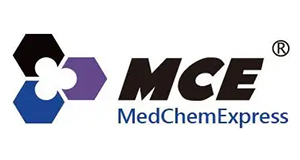Amitriptyline (hydrochloride), CAS 549-18-8
Amitriptyline (hydrochloride), CAS 549-18-8
SKU
MEXHY-B0527A-10G
Packaging Unit
10 g
Manufacturer
MedChemExpress
Availability:
loading...
Price is loading...
Product Description: Amitriptyline hydrochloride is an inhibitor of serotonin reuptake transporter (SERT) and noradrenaline reuptake transporter (NET), with Kis of 3.45 nM and 13.3 nM for human SERT and NET, respectively. Amitriptyline hydrochloride also weakly binds to dopamine reuptake transporter (DAT) with a Ki of 2.58 μM. Amitriptyline hydrochloride also inhibits adrenergic, muscarinic, histamine and 5-HT receptors. Amitriptyline hydrochloride is a TrkA and TrkB receptors agonist with potent neurotrophic activity. Amitriptyline hydrochloride has antidepressant activity[1][2][3].
Applications: Neuroscience-Neurodegeneration
Formula: C20H24ClN
References: [1]Jang, S.W., et al., Amitriptyline is a TrkA and TrkB receptor agonist that promotes TrkA/TrkB heterodimerization and has potent neurotrophic activity. Chem Biol, 2009. 16(6): p. 644-56./[2]Kim Lawson. A Brief Review of the Pharmacology of Amitriptyline and Clinical Outcomes in Treating Fibromyalgia. Biomedicines. 2017 Jun; 5(2): 24./[3]S Neil Vaishnavi , et al. Milnacipran: a comparative analysis of human monoamine uptake and transporter binding affinity. Biol Psychiatry. 2004 Feb 1;55(3):320-2./[4]Ghelardini C, et al. Antinociception induced by amitriptyline and imipramine is mediated by alpha2A-adrenoceptors. Jpn J Pharmacol. 2000 Feb;82(2):130-7.
CAS Number: 549-18-8
Molecular Weight: 313.86
Compound Purity: 99.28
Research Area: Neurological Disease; Cancer
Solubility: DMSO : ≥ 100 mg/mL/H2O : ≥ 50 mg/mL
Target: 5-HT Receptor;Adrenergic Receptor;Histamine Receptor;mAChR;Serotonin Transporter;Sodium Channel;Trk Receptor
Applications: Neuroscience-Neurodegeneration
Formula: C20H24ClN
References: [1]Jang, S.W., et al., Amitriptyline is a TrkA and TrkB receptor agonist that promotes TrkA/TrkB heterodimerization and has potent neurotrophic activity. Chem Biol, 2009. 16(6): p. 644-56./[2]Kim Lawson. A Brief Review of the Pharmacology of Amitriptyline and Clinical Outcomes in Treating Fibromyalgia. Biomedicines. 2017 Jun; 5(2): 24./[3]S Neil Vaishnavi , et al. Milnacipran: a comparative analysis of human monoamine uptake and transporter binding affinity. Biol Psychiatry. 2004 Feb 1;55(3):320-2./[4]Ghelardini C, et al. Antinociception induced by amitriptyline and imipramine is mediated by alpha2A-adrenoceptors. Jpn J Pharmacol. 2000 Feb;82(2):130-7.
CAS Number: 549-18-8
Molecular Weight: 313.86
Compound Purity: 99.28
Research Area: Neurological Disease; Cancer
Solubility: DMSO : ≥ 100 mg/mL/H2O : ≥ 50 mg/mL
Target: 5-HT Receptor;Adrenergic Receptor;Histamine Receptor;mAChR;Serotonin Transporter;Sodium Channel;Trk Receptor

 Deutsch
Deutsch









